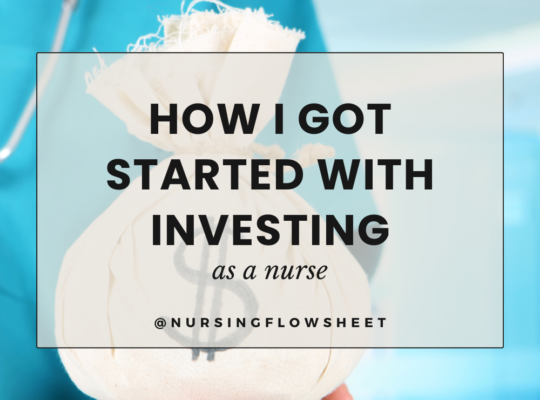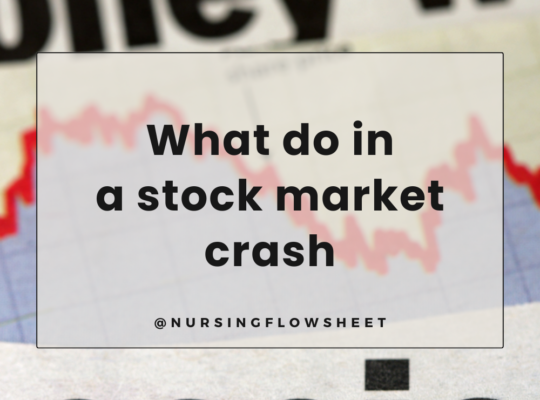Want to know the basic information about different types of investment accounts? There are so many saving and investment accounts and sometimes is hard to choose what to use when you are starting with your investing journey. There are tons of resources online but the information can be very overwhelming. Here is a post that overview these accounts.

This post may contain affiliate links, allowing us to earn a commission on the products we would recommend to our families and closest friends.
BANK ACCOUNTS
Bank accounts are the most basic level of saving and investing. This the first accounts I opened when I was a teenager and working my student assistant job when I was in the university.
CHECKING
Checking accounts are just money hubs. This is where your money parks and typically where you deposit your paycheck. Sometimes, after a “direct deposit” day, your money can be transferred to savings, investments, and expenses. So your checking account is a temporary pass-thru point for your money.
Back when I was a new nurse, I used to keep most of my money in the checking account- I learned later on that it was a bad idea because the money I kept there did not gain ANY interest.
@mizzvaine Replying to @mary #checkingaccount #checkingaccountbalance #savingtips #nursewhoinvests #payyourselffirst💵 ♬ original sound – Ellaine
SAVINGS
You’re probably familiar with savings accounts. This is one of the safest places to keep your money as it is insured by Federal government (at least most of the ones I would recommend to you). Most emergency fund is best kept in a savings account because it’s liquid (easily accessible) and can be withdrawn if you need it.
READ: WHY EMERGENCY FUND IS IMPORTANT
Most traditional banks like Chase, Wells Fargo, BoA offers a low interest rate – so I usually recommend using a savings account that yields interest rates that are over 1%.
Here are some HYSA that offers good interest rates:
- Ally Bank
- Capital One 360 Savings
- American Express
- SoFI
- Marcus by Goldman Sachs
Certificate of Deposit (CD’s)
CD’s (Certificates of Deposit) are “time deposits”. You deposit your money with the bank for a certain amount of time, at an agreed-upon interest rate. So at the end of that time, the bank gives you your money back plus your interest. For example, you can get a $500 5-year CD, earning 2.3% interest. At the end of the 5 years, you get your $500 back plus about $60 in interest.
Generally, the more money you invest and the longer the holding period, the better the interest rate.
CD’s can be a good option for saving money to buy a house, a vacation with family or even starting a business. The money in CD’s are safe and most are insured by the Federal Government. It’s relatively inaccessible because there is a time frame when you’re able to take the money out.
MONEY MARKET ACCOUNTS
Money market accounts sound fancy, but they’re really just slightly more sophisticated savings accounts. This is perfect for short-term savings account just like CD’s. They give better interest rates than HYSA however, most of them have minimum balance.
INVESTMENT ACCOUNTS
There are many types of investment accounts that you can choose from, each with different rules, tax benefits, maximum contribution limits etc.
401(K) / 403b / 457
401(k)’s are employer-sponsored retirement accounts. Your employer will automatically deposit your contribution in your 401(k) before issuing your paycheck. So that means that your contributions are pre-tax, so you won’t pay income tax on the amount you contribute. It also lowers down your taxable income.
Many employers offer contribution-matching.
READ: What you need to know about 401ks
IRA
IRA’s (Individual Retirement Arrangements) are a common alternative to 401(k)’s. They’re also pre-tax accounts, so you’re not charged income tax on the amount you contribute to your IRA. To replicate the simplicity of automatic 401(k) contributions, you can set up auto-transfers from your checking account to your IRA every pay-day.
The downsides are: you can only save up to $6,500/year for the year 2023, and you can’t get free money from a contribution-matching program.
ROTH IRA
The Roth IRA is a newer type of IRA that was introduced in 1997, thanks to Senator William Roth. Hence the name Roth IRA. A Roth IRA is almost identical to the Traditional IRA, the only difference being the timing of the tax benefits. Whereas the tax benefits of the Traditional IRA are frontloaded, the tax benefits of the Roth IRA are backloaded: full taxes on your contributions, but tax-free growth and tax-free withdrawals.
The maximum you’re allowed to contribute to a Roth IRA in 2023 is also $6,500 per year, same as the Traditional. But unlike the Traditional IRA, contributions to a Roth IRA do not reduce your taxable income. So if you contribute $6,000 to your Roth IRA every year, you’re making those contributions with after-tax money, or money that has already been taxed.
The beauty of the ROTH IRA is being able to withdraw your contributions ANY TIME (not earnings) Once you turn 59.5, withdrawals from your Roth IRA are 100% tax free, forever and forever. In other words, tax-free retirement income for the rest of your life… WOO HOO!
READ: Benefits of ROTH IRA
Individual Brokerage Account
Any brokerage account that isn’t specified explicitly as an IRA, HSA 401(k), or otherwise tax-advantaged account, it is considered a fully taxable brokerage account. There are no tax benefits to this type of investment account.
You pretty much incur CAPITAL GAINS TAX every time you sell and make profit off of your investments. You also incur income tax on the dividends and interest income from your contributions.
The taxable account has zero restrictions on when you can withdraw from it and offers zero tax benefits. Since taxes eat up a large portion of investment earnings and profits, you always want to maximize tax-advantaged accounts like IRAs, 401(k)s and HSA before putting money into taxable accounts.
Health Savings Account
HSAs (Health Savings Account) are supercharged tax-sheltered investment accounts that help you put money away for health-related expenses.
The annual contribution limit to an HSA is $3,850 for the 2023 tax year.
What I LOVE about HSAs is that they combine all the tax benefits of Traditional IRAs and Roth IRAs in one! That’s right… pre-tax contributions, tax-free earnings, and tax-free withdrawals. The only caveat is that the withdrawals need to be for health-related expenses. But then again, everyone has health-related expenses. Doctor visits, acupuncture, therapy, contact lenses, dental work, x-rays, you name it – these are all qualified HSA expenses that can be withdrawn tax-free.
When you open an HSA, you’ll get a debit card that you can swipe whenever you need to pay for a medical expense.
Unlike IRAs and 401(k)s, there’s no age restriction on when you can start spending your HSA; as long as it’s for a qualified expense, you don’t have to wait until you turn 59.5. HSAs are full-blown investment accounts where you can buy stocks, bonds, and mutual funds in your HSA just like you would in any other investment account.
READ: How to use HSA for retirement
How to qualify for the HSA: To qualify for an HSA, you must be on a health insurance plan that allows you to have an HSA. Check with your insurance provider to see if your plan qualifies you for an HSA. If your plan doesn’t allow HSAs, then consider switching to one that does.
Here is a summary of these investment accounts & the tax implications of it.

What to put in your Investment Accounts
STOCKS, BONDS, AND INVESTMENT FUNDS
All these investment accounts and money transferred is USELESS if you don’t pick investments in it. Here are some of the investments you can buy in your accounts:
STOCKS
Stocks are ownership shares of a company. So when you buy Apple stock, for example, you own a small piece of Apple. If the company does well, your stock gets more valuable because more people want a piece of the company.
You also might receive dividends, which are payments some companies make to their shareholders (fancy word for stock owners). You can reinvest those dividends to buy more of the company’s stock to help the value of your portfolio grow faster.
The problem with stocks: there are no “safe” stocks. A company stock may GO UP or DOWN. Buying an individual company’s stock is a risky game that’s why I prefer to invest in other options.
BONDS
Bonds are like little loans investors make to organizations (often federal agencies or branches of the government). Almost like CD’s, you agree to let the organization use your money for a certain amount of time, and when that time is up, you get your investment back plus the agreed upon interest. So bonds are much safer than stocks. But that also means the potential reward is lower.
Bonds are a good option for older investors who are more interested in protecting their money than growing it. If you’re a younger investor like me (wink wink) you will have time to recover from stock market dips.
Personally, I don’t like investing in individual stocks or bonds. Instead, I invest in funds! Let’s look at a couple investment fund options.
MUTUAL FUNDS AND INDEX FUNDS
Both Index funds and mutual funds allow you to invest in a variety of stocks. However, the main differences between the two stock investment options lie in the management and earning potential.
Mutual funds are actively managed; investment experts manage your investment, reducing the chances of a loss. On the other hand, index funds are more passive.
Also, mutual funds require higher fees than index funds. This makes the index funds more promising for higher returns.
OPTIONS, FUTURES, AND ANNUITIES
Um…these are more complex. They’re investment options that make some people good money, but they’re more for seasoned investors. I do options trading sometimes and could get money- but they’re very risky and would require you to really know what you’re investing on.
Anyway, hope this post is helpful!
Let me know in the comments if you’re interested in learning about these, and we’ll get to work figuring out the details for you!








